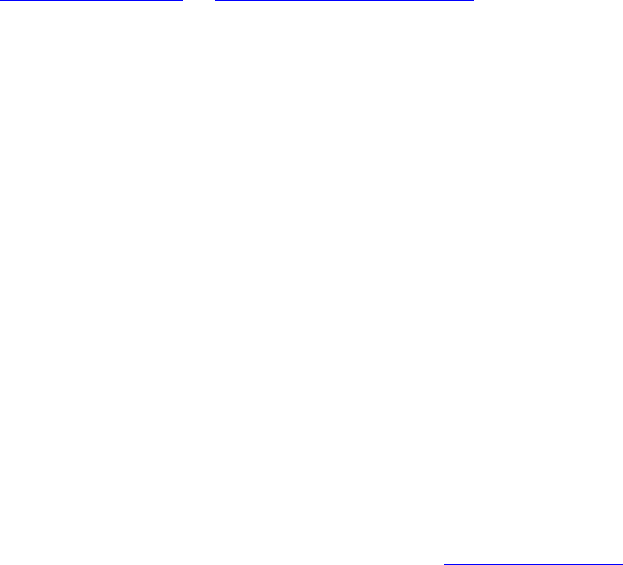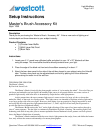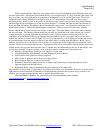
Light Modifiers
Page 2 of 2
Questions? Please call 800.886.1689 or email info@fjwestcott.com. ©F.J. Westcott Company
When using the Master’s Brush in your camera room, you will immediately see the difference from your
previous light source. Placing the light pointed directly at your subject about 32” away from the light source, will
now give you a very crisp light pattern as compared to an umbrella or soft box main light source. Do not feel
ashamed to have a string attached to your light to give this 32” measurement. Our studio has always had a
measuring string. When you are in the process of creation you don’t need to be worrying about measurements.
Once the light is placed straight on you can now move the light 2” to feather the light to control the amount of
drama the light will create. The Master’s Brush has taken the “guess work” out of parabolic feathering, if it is
turned much past the 2” feather the light disappears completely. There is a barn door that comes with the
Master’s Brush that is placed closest to the subject on the light. This helps further your control when sculpting
the face with light. The Master’s Brush should only be used on a stand that is on casters so that you can have
complete mobility in creating light patterns sometimes a very slight movement is needed for precision. In
conjunction with the Master’s Brush your lighting should be balanced with a very small soft box to the left or
right of the camera to create a form fill light. It is also very important for your fill light to be moved side to side
at constant distance from the subject so that all of the light control is coming from the Master’s Brush. Also a
reflector should be used on the shadow side of the face to complete the spiral of light and create beautiful open
shadows. Earlier we mentioned that there are 7 light patterns that can be used with the Masters Brush, however by
turning the face the opposite direction those same 7 patterns may read differently on the face of the subject, thus
giving you potentially 14 options to light a face. For those who are curious, the 7 light patterns are:
• Butterfly- Straight down forming an even shadow over the nose
• Modified Butterfly- Half Butterfly and Half Rembrandt Short or Broad
• Split- Half the face lighted, as viewed straight on
• Short- Same as split but viewed from your right position
• Broad-Same as Split but viewed from your left
• Rembrandt Short-light coming down at a 45 degree angle producing a triangle light pattern on the
opposite cheek from the light source.
• Rembrandt Broad- same as Rembrandt short but coming from the other side.
Any variation of the position of light patterns is probably an accident or an abstraction. However, all of the classic
light patterns can be intensified or flattened to accommodate the particular mood you are trying to achieve. In
addition, you can play with the lighting ratios to achieve the desired mood.
Give the Master’s Brush a try, you will love it. For information please contact
www.fjwestcott.com or www.cooksphotography.com
Velcro is a registered trademark of the Velcro Co.




